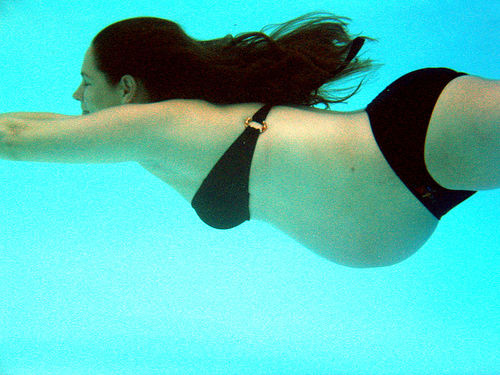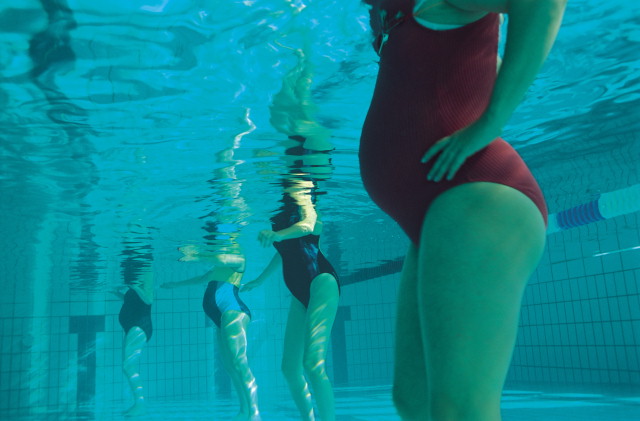- Swim Teach Home
- benefits of swimming
- Swimming During Pregnancy
Swimming During Pregnancy: Benefits, Safety Tips & Best Strokes
So you're wondering if swimming during pregnancy is ok? The short answer is yes, absolutely! Swimming is one of the best exercises for pregnant women, offering a full-body workout with minimal impact on joints. But is it completely safe? What strokes should you avoid? How does swimming affect your baby? Let me break it all down in plain English and answer all your questions, backed by medical insights, research, and practical tips, so you can feel confident.
Is Swimming Safe During Pregnancy?
✅ Yes! Here's Why:
Good news: Swimming is one of the safest ways to stay active while pregnant. It keeps you moving, helps with circulation, and gives your joints a break from all that baby weight. Plus, floating in the water? Feels like heaven when your belly starts feeling extra heavy.
Swimming provides low-impact cardiovascular exercise, reduces swelling, and alleviates back pain. Unlike running or high-intensity workouts, it allows you to stay active without straining your joints.

Scientific Backing
Studies have shown that pregnant women who swim regularly experience fewer pregnancy discomforts like back pain, swelling, and fatigue. Research from the American College of Obstetricians and Gynecologists (ACOG) confirms that water-based exercises help improve circulation and reduce pregnancy-related discomforts.
When Should You Avoid Swimming?
While generally safe, some conditions may require caution:
- Placenta Previa: Avoid swimming if advised by your doctor.
- Vaginal Bleeding: Always consult a healthcare provider if you experience spotting.
- Water Breaks Early: Never swim if your water has broken, as it increases the risk of infection.
Medical Advice: Dr. Emily Carter, OB-GYN, says, "Swimming is one of the safest and most beneficial exercises during pregnancy. However, always listen to your body and consult your doctor if you have concerns."
Best Swimming Strokes for Pregnant Women
Not all strokes are created equal. Some provide relief from pregnancy aches, while others might strain your back. Below is a comparison table to help you choose the right stroke:
|
Stroke |
Benefits |
Precautions |
|
Improves posture, strengthens back & chest |
May aggravate SPD (Symphysis Pubis Dysfunction) | |
|
Relieves back pain, promotes circulation |
Avoid if you feel dizzy in late pregnancy | |
|
Excellent cardio, builds endurance |
Avoid excessive twisting of the torso | |
|
Sidestroke |
Low-impact, great for relaxation |
No significant risks |
My Tip: If you experience pelvic pain (SPD), use a kickboard and limit breaststroke movements to avoid worsening discomfort.
👉 Got pelvic pain? Try swimming with a pool buoy between your legs. It takes the pressure off your lower body.
👉 Feeling out of breath? Slow down! Pregnancy naturally makes you more winded - totally normal.
FAQs: Common Concerns When Swimming During Pregnancy
1. Can Chlorine Harm My Baby?
No, swimming in chlorinated pools is safe during pregnancy. Research from the National Institute of Health (NIH) found no negative effects of chlorine exposure on fetal development.
2. Is Swimming in a Heated Pool Safe?
Yes, as long as the water temperature is below 32°C (89°F). Hot tubs and jacuzzis, however, should be avoided due to the risk of overheating.
3. Are Public Pools Hygienic for Pregnant Women?
Public pools are generally safe, provided they are well-maintained. To minimize risks:
- Shower before and after swimming
- Avoid pools with strong chemical smells (may indicate high chlorine levels)
- Check pool hygiene ratings (if available)

Swimming During Each Trimester: What You Need to Know
First Trimester
- Start slow if you weren't previously active.
- Avoid overheating; swim in a cool pool.
- Hydrate! Your body loses fluids even in water.
Second Trimester
- Use supportive swimwear to accommodate a growing belly.
- Switch to gentler strokes if you feel strain on your back or hips.
- Floating on your back? If you feel dizzy, roll onto your side.
Third Trimester
- Prioritize low-impact strokes like sidestroke and breaststroke.
- Avoid sudden, jerky movements.
- If you feel fatigued, use a kickboard for support.
My Tip: "For many ladies who have asked me for tips and advice about swimming during pregnancy, I always recommend they try water aerobics or prenatal swim classes in their third trimester. They often report back to me about how great the extra buoyancy and support feels during those sessions."
Quick Safety Checklist for Pregnant Swimmers
✅ Drink water before and after swimming - yes, you still need to hydrate.
✅ Walk carefully around the pool - wet surfaces = slip risk.
✅ Wear supportive swimwear - a good maternity swimsuit makes all the difference.
✅ Skip diving - a belly flop at this stage? No thanks.
✅ If something feels off, stop. Listen to your body and don't push yourself too hard.
Enhancing Your Swimming Routine: Extra Tips
1️⃣ Safe Pool Exercises for Pregnancy
- Flutter Kicks: Strengthen legs without impact.
- Wall Push-offs: Improve endurance with gentle resistance.
- Water Squats: Great for preparing the pelvic floor for labor.
2️⃣ Swimming with SPD: What Are Your Options?
- Avoid the traditional breaststroke kick if it worsens pain.
- Use a pull buoybetween your thighs to reduce leg movement.
- Try gentle floating or water yoga for pelvic relief.
Final Thoughts: Why Swimming Is a Must for Pregnant Women
Swimming during pregnancy is a safe, effective, and refreshing way to stay active. Whether you're a seasoned swimmer or a beginner, listening to your body and following safety precautions ensures a smooth experience.


